#Ptolemaic period
Explore tagged Tumblr posts
Text


Mummies with Golden Tongues Found in 2,500-Year-Old Egyptian Tomb
More than a dozen ancient gold tongues have been discovered in a cemetery at the site of Oxyrhynchus in Egypt.
Archaeologists in Egypt have discovered 13 ancient mummies with gold tongues and nails in a cemetery at the site of Oxyrhynchus.
The team made the finds when they dug down to the bottom of a burial shaft, revealing a hall with three chambers that held dozens of mummies. The human remains date to the Ptolemaic period (circa 304 to 30 B.C.), a time when a dynasty descended from one of Alexander the Great's generals ruled Egypt, according to two statements released by the Egyptian Ministry of Tourism and Antiquities.
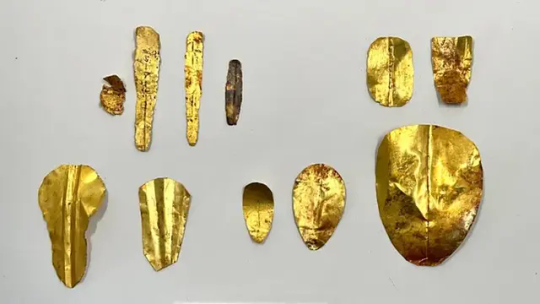

Archaeologists had previously unearthed 16 gold tongues at Oxyrhynchus. The ancient Egyptians put gold tongues in mummies with the intention of helping the deceased speak in the afterlife, and because they believed that gold was "the flesh of the gods," Esther Pons Mellado and Maite Mascort, co-directors of the Spanish-Egyptian archaeological mission at Oxyrhynchus, said earlier this year. The same team made the new finds.
"The number of gold tongues here is high, which is interesting," Salima Ikram, an Egyptology professor at the American University in Cairo who was not involved with the latest excavation, said in an email. "Possibly the bodies belong to higher elites that were associated with the temple and animal cults that proliferated in the area," Ikram said, noting it's possible that gold tongues "might have been the vogue for the embalming house in the area."

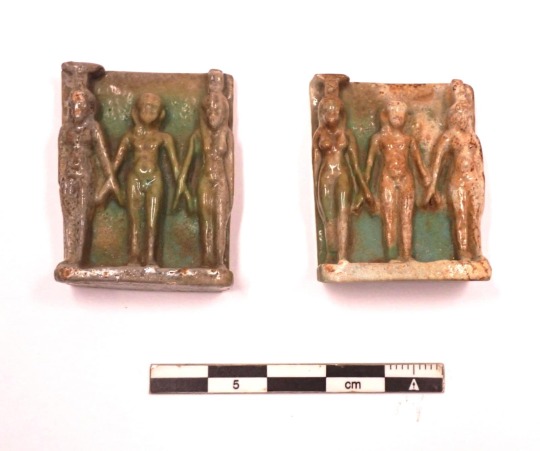
During the latest dig, the archaeologists also found 29 amulets with the mummies. Some amulets are in the shape of scarab beetles, as the ancient Egyptians associated scarabs with the movement of the sun across the sky. Other amulets are in the shape of Egyptian deities, including Horus, Thoth and Isis. Some of them have forms that combine multiple deities together.
The excavation also revealed wall paintings, including one that depicts a tomb owner named "Wen-Nefer," who is shown being accompanied by several Egyptian deities. Another painting on the ceiling depicts the sky goddess Nut surrounded by the stars. There is also a painting of a boat that has multiple deities depicted on it.
"As for the paintings, the quality is really excellent and the freshness of colors is simply amazing," Francesco Tiradritti, an Egyptologist at D'Annunzio University of Chieti-Pescara in Italy who was not involved in the dig, said in an email.
By Owen Jarus.
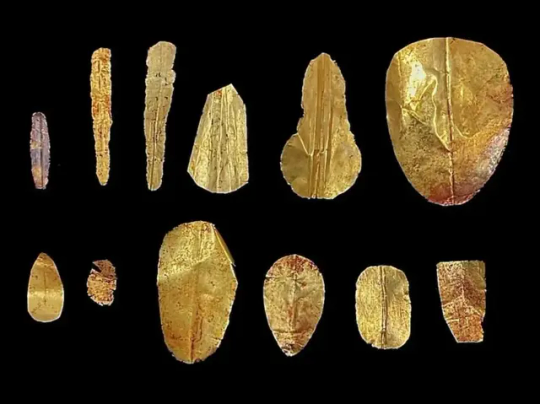
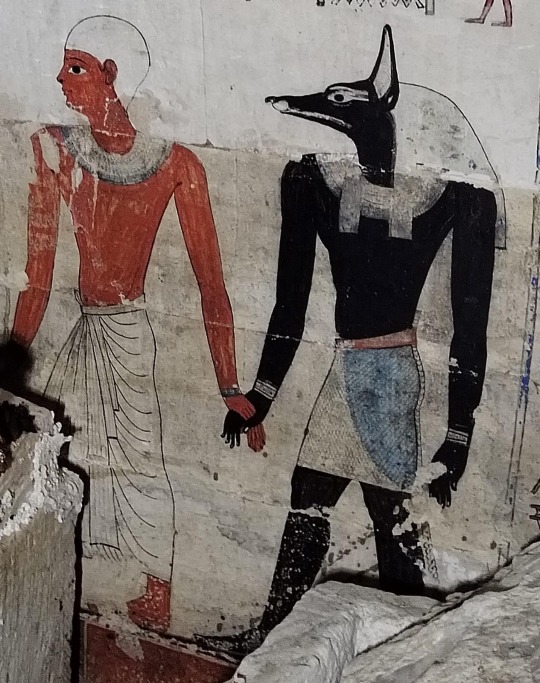
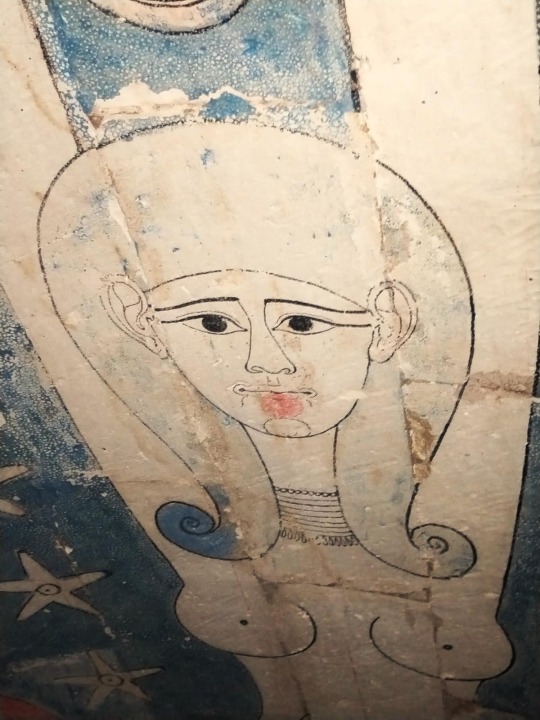


#Mummies with Golden Tongues Found in 2500-Year-Old Egyptian Tomb#Oxyrhynchus#Ptolemaic period#Osiris#gold#gold tongues#ancient artifacts#archeology#archeolgst#history#history news#ancient history#ancient culture#ancient civilizations#ancient egypt#egyptian history#egyptian art#ancient art
68 notes
·
View notes
Text

~ Vignette from funerary papyrus (Book of the Dead) from papyrus N 3149.
Period: Ptolemaic Period
Medium: Papyrus
#ancient#ancient art#history#museum#archeology#ancient egypt#ancient history#archaeology#egyptian#egyptology#egypt#book of the dead#funerary art#funerary papyrus#papyrus#sistrum#hieratic#crown#atum#vignette#Ptolemaic Period
574 notes
·
View notes
Text
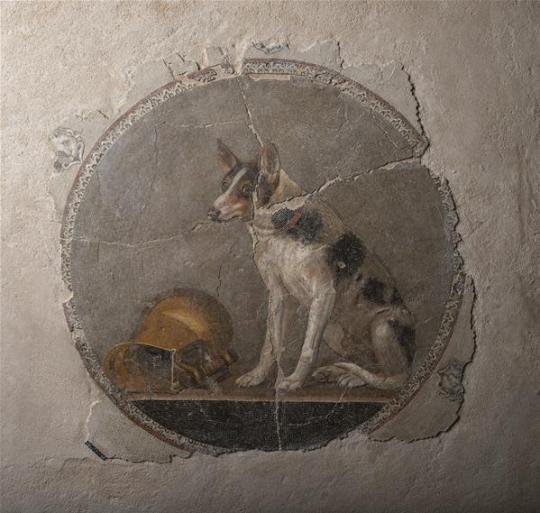
Floor fresco of a dog and an overturned vessel. Alexandria, 2nd century BCE.
EDIT: It's a mosaic.
#ancient history#fresco#ancient alexandria#ptolemaic egypt#ptolemaic period#poor doggo#he knows he did something wrong
787 notes
·
View notes
Text


Fragment of an oinochoe (wine jug) depicting Queen Berenike II. Hellenistic Period, Ptolemaic Egypt, 246-221 B.C. Faience. In the collection of the Metropolitan Museum of Art.
Description from the Met:
Ptolemaic oinochoai (wine-jugs) with portraits of the queens were libation vessels associated with the royal cult, and surely also emphasized the identification of Ptolemaic queens with the Egyptian goddess Isis... Queen Berenike II (246-221 B.C.) is almost certainly represented on this fragment. Her relatively long reign accounts for the different styles that have been attributed to her early, middle, and mature reign. This fragment depicts the queen in what has been termed the mature style, wearing the stephane that the Ptolemaic queens adopted from Greek goddesses... The queen holds the cornucopia adopted by Ptolemies as their insignia, its contents consisting of sheaves of wheat, rather indistinct cakes, and a bunch of grapes that spilled from the mouth of the horn to which only a break edge testifies.
#vase#fragment#ancient art#Queen Berenike II#Queen Berenice II#Ptolemaic Egypt#Ptolemaic Dynasty#Ptolemaic Period#Hellenistic Period#Hellenistic art#Greek#Egyptian#Isis#oinochoe#faience#cornucopia#Metropolitan Museum of Art
95 notes
·
View notes
Text
just ran across this perfect 2000-year-old portrait of a pet who knows what he did.
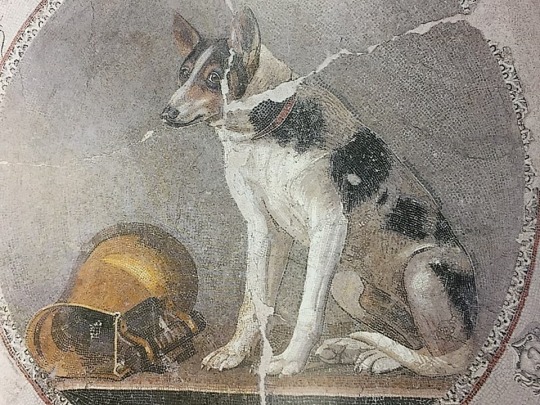
"Dog Mosaic," Ptolemaic period, 2nd century BCE, floor of a house in Alexandria, Egypt. 3.25x3.25m. (Pitcher is probably gold.)
1K notes
·
View notes
Text

Egyptian mosaic glass inlays, avian hieroglyphs. Ptolemaic Period - Roman Period, 100 BCE - 100 CE The Met / Christie's. Photos in a collage.
#avian#avian hieroglyphs#birds#birdblr#photo collage#glass inlays#mosaics#egyptian#ptolemaic#Ptolemaic period#roman period
42 notes
·
View notes
Text
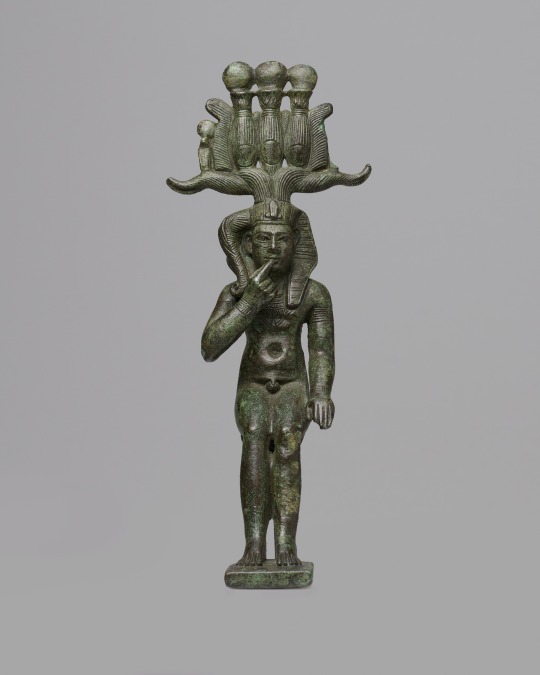
Statuette of a Child God, probably Horus the Child (Harpocrates)
Egyptian, Late Period–Ptolemaic Period (664–30 BCE)
The child god Horus was worshipped as the hero-to-be who would avenge his father’s murder. Horus also symbolized eternal life through his role as the sun, battling evil at night to rise triumphant every morning. The Greek form of the Egyptian “Horus the Child” is “Harpokrates.” The god’s youth is indicated by his side lock of hair and his finger touching his mouth. The Greeks and later the Romans worshipped him with his parents as part of a growing interest in mystery cults promising a true and real life after death.
27 notes
·
View notes
Photo
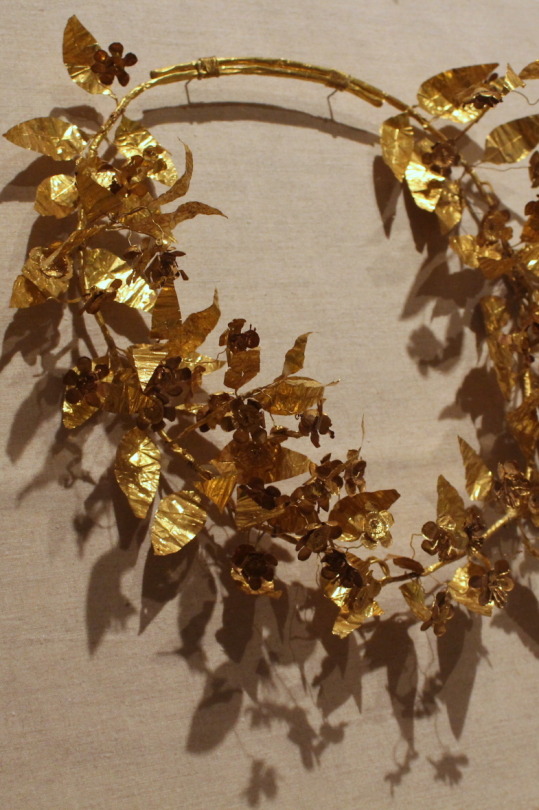
Wreath, 3rd century-2nd century B.C.E.
77 notes
·
View notes
Text

ⲟⲩⲟⲩⲏⲃ ⲛ̀ⲣⲉⲙⲛ̀ⲭⲏⲙⲓ (an Egyptian priest)
#coptic#egypt#ⲭⲏⲙⲓ#kemet#ancient egypt#archeology#egyptian#pharaonic art#egyptian mythology#pharaoh#art#ptolemaic period#spqr#rome
20 notes
·
View notes
Text


Canopic Box with Enshrouded Falcon from Egypt dated between 305 - 31 BCE on display at the Kunsthistorisches Museum in Vienna, Austria
Photographs taken by myself 2022
#art#archaeology#history#ancient#egypt#egyptian#ptolemaic period#iron age#kunsthistorisches museum#vienna#barbucomedie
1 note
·
View note
Text

Ancient Egyptian amethyst cat pendant, late Ptolemaic period, 664-30 BC.
1 note
·
View note
Text
Pillars at the Temple of Khnum in Esna, Egypt

0 notes
Text





~ Priest (?).
Period: Ptolemaic Period
Medium: Limestone
#ancient#ancient art#history#museum#archeology#ancient egypt#ancient sculpture#archaeology#ancient history#egyptian#egyptology#priest#Ptolemaic Period#Limestone
326 notes
·
View notes
Photo
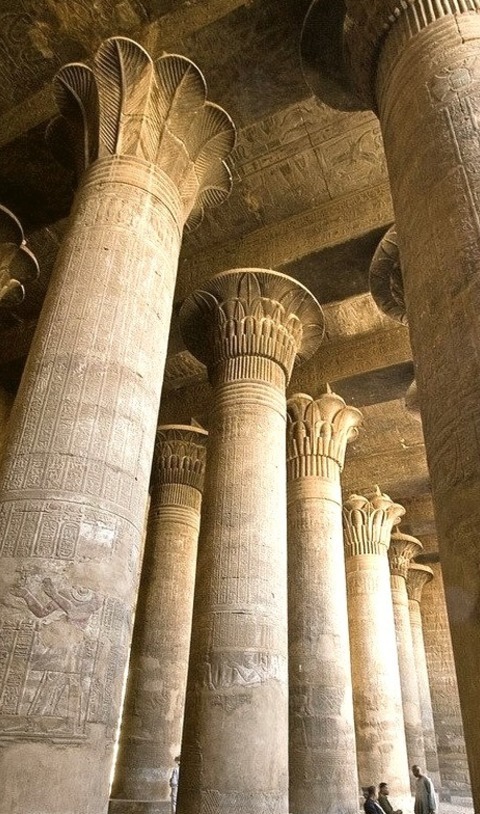
Pillars at the Temple of Khnum in Esna, Egypt
0 notes
Text
Pillars at the Temple of Khnum in Esna, Egypt

0 notes
Text

Montu (god with the head of a bull, seated, hands on the thighs, loincloth, solar disk, double straight feather [Amun crown], double uraeus, écrasant); the Nine Bows
Ptolemaic period (332 - 30 BCE), Temple of Montu, Medamud, Egypt
Limestone sculpture, engraving
Height: 78.5 cm; width: 19.1 cm; depth: 38 cm
Collection of the Louvre
Source: Wikimedia Commons

Ptolemaic statue of the war god Montu with a bull’s head, the symbol of military valor.
#Montu#mythology#war#ox#limestone#sculpture#figure#symbolism#Medamud#religion#stone#art#art history#Ptolemaic period#Egyptian#Musee du Louvre#Wikimedia Commons#Louvre Museum
179 notes
·
View notes